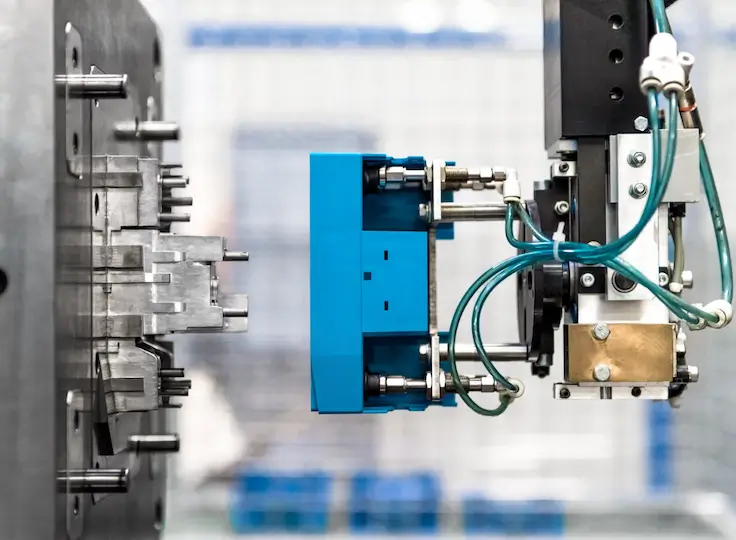The Basics of Micro Servo Arm Attachment
If you’ve ever tinkered with robotics, RC cars, or DIY gadgets, you’ve probably encountered a micro servo. These tiny powerhouses are the unsung heroes of motion in small-scale projects, turning electrical signals into precise mechanical movement. But even the best servo is useless if its arm isn’t attached correctly. Let’s break down how to nail this fundamental skill—no engineering degree required.

Why Micro Servos Matter
Micro servos are everywhere. They control the flaps in model airplanes, animate robot limbs, and even adjust camera angles in custom rigs. Their compact size and affordability make them ideal for hobbyists. But their real magic lies in their ability to translate code or remote commands into physical action. The servo arm—the part that actually moves—is where the rubber meets the road. A poorly attached arm can lead to wobbling, misalignment, or even stripped gears.
Tools You’ll Need
Start by gathering your supplies:
A micro servo (common models include SG90 or MG90S) The servo arm (usually included with the servo) A small screwdriver (often Phillips-head, size #00) Optional: Threadlocker glue, sandpaper, or a hobby knife
Pro tip: If your servo didn’t come with an arm, check the spline count (the number of teeth on the servo shaft) to ensure compatibility. Most micro servos use 25T (25-tooth) splines.
Step 1: Aligning the Servo Arm
Before attaching anything, center your servo. Connect it to a power source (like a 5V battery or microcontroller) to let it rotate to its neutral position. This prevents the arm from being installed at an awkward angle. If you’re using an Arduino or Raspberry Pi, write a quick script to set the servo to 90 degrees.
Once centered, gently press the servo arm onto the shaft. The splines (those tiny ridges) should mesh smoothly. If it feels stiff, don’t force it—double-check the alignment. For stubborn arms, a drop of silicone lubricant can help, but avoid oils that attract dust.
Step 2: Securing the Screw
Micro servo arms typically use a single screw to lock them in place. Here’s where things get tricky: over-tightening can crack the plastic arm, while under-tightening leads to slippage. Tighten the screw just enough to eliminate play. If the arm still rotates freely, add a tiny drop of threadlocker to the screw threads.
Got a stripped screw hole? Don’t panic. Swap the screw for a slightly larger one, or wrap the original screw in plumber’s tape for a tighter grip.
Step 3: Testing and Calibration
Attach a temporary pointer (like a toothpick or piece of tape) to the arm. Power up the servo and test its range of motion. If the movement seems jerky or the arm slips, revisit the alignment and screw tightness. Use a servo tester or calibration code to ensure smooth sweeps from 0 to 180 degrees.
Common Pitfalls (and How to Dodge Them)
Stripped Splines: Forcing the arm onto the shaft can wear down the teeth. If the arm feels loose even when screwed in, replace both the arm and servo. Plastic Fatigue: Cheap servo arms can crack over time. Reinforce them with a thin layer of epoxy or upgrade to metal arms for heavy-duty projects. Electrical Noise: Jittery movement? Add a capacitor (10–100µF) across the servo’s power leads to stabilize voltage.
By now, your servo arm should be securely attached. But this is just the beginning. In Part 2, we’ll explore advanced techniques, creative applications, and how to turn a wobbly mess into a buttery-smooth motion machine.
Elevating Your Servo Game—Troubleshooting and Creative Applications
You’ve mastered the basics. Your servo arm is snug, centered, and ready for action. Now, let’s turn that humble component into the backbone of something extraordinary.
When Good Servos Go Bad: Troubleshooting 101
Even perfectly attached arms can act up. Here’s how to diagnose issues:
Problem: The arm vibrates but doesn’t rotate. Fix: Check for obstructions. If the arm is hitting another component, adjust its position or trim it with a hobby knife.
Problem: The servo gets hot. Fix: Overheating usually means it’s stuck against resistance. Reduce the load or upgrade to a higher-torque servo.
Problem: Inconsistent positioning. Fix: Recalibrate using your microcontroller’s servo library. For analog servos, tweak the PWM (pulse width modulation) signal.
Creative Hacks for Unconventional Projects
Micro servos aren’t just for robots. Try these ideas:
Automated Plant Waterer: Attach a small lever arm to a water valve. Use a moisture sensor to trigger the servo when soil dries out. Pan-Tilt Camera Mount: Combine two servos for 360-degree movement. Secure the arms with lightweight aluminum brackets. Interactive Art Installations: Hide servos behind canvases to create moving elements. Use fishing line to connect arms to suspended objects.
Upgrading Your Setup
Metal Arms: Ditch plastic for aluminum arms in high-stress projects. 3D Printing: Design custom arms in Tinkercad or Fusion 360 for unique shapes. Gear Mods: Add a potentiometer to the servo shaft for real-time position feedback.
Maintenance Tips for Longevity
Lubricate Sparingly: A dab of silicone grease on the shaft every six months prevents wear. Dust Proofing: Wrap the servo in heatshrink tubing if used in dirty environments. Storage: Store servos in a cool, dry place. Remove arms to relieve gear tension.
The Bigger Picture: Servos in Modern Tech
From animatronic movie props to precision surgical robots, micro servos are quietly shaping the future. By mastering their mechanics, you’re not just building gadgets—you’re joining a global community of innovators.
So, what’s next? Grab a servo, attach that arm with confidence, and start creating. The only limit is your imagination. And maybe your screwdriver’s battery life.











































